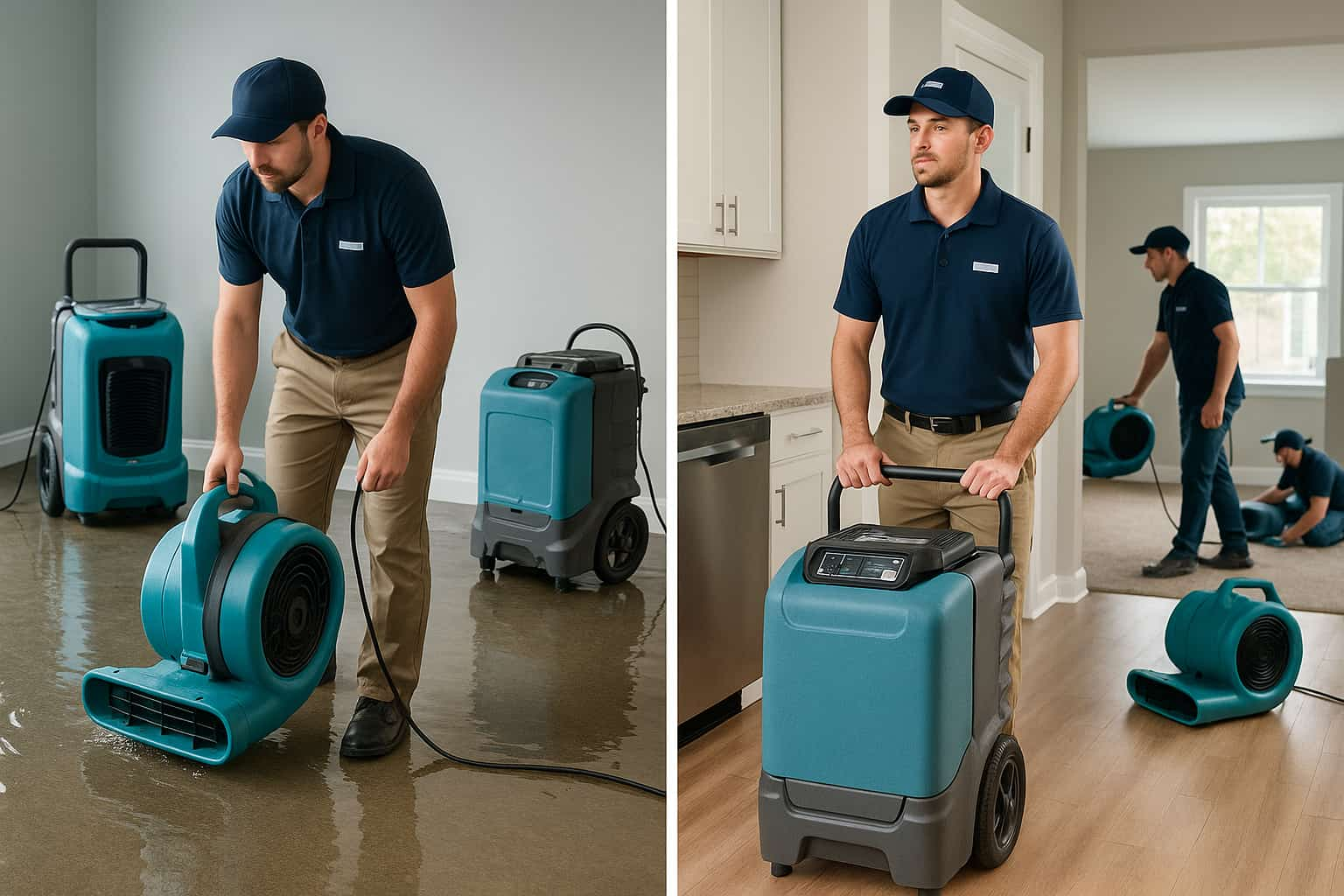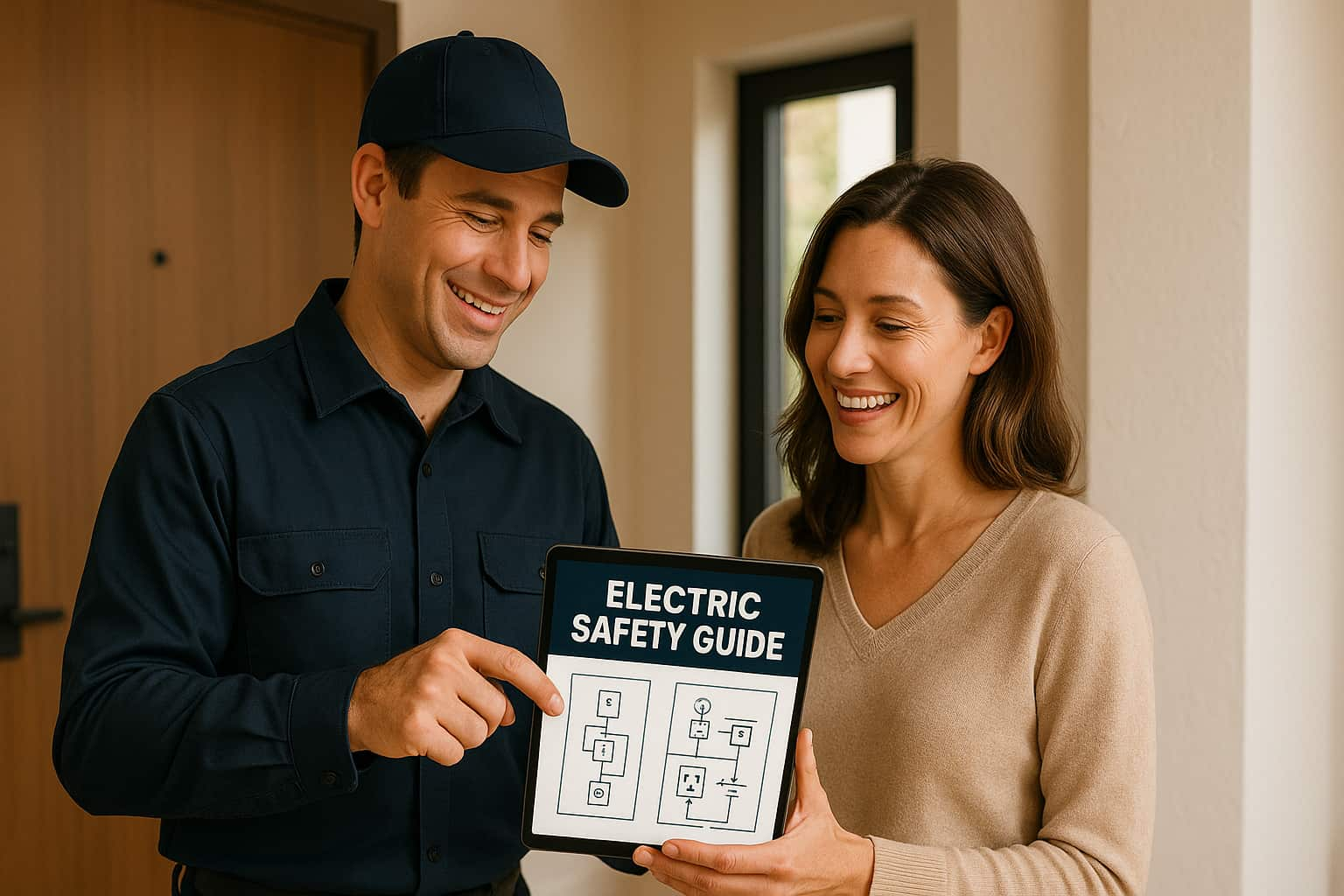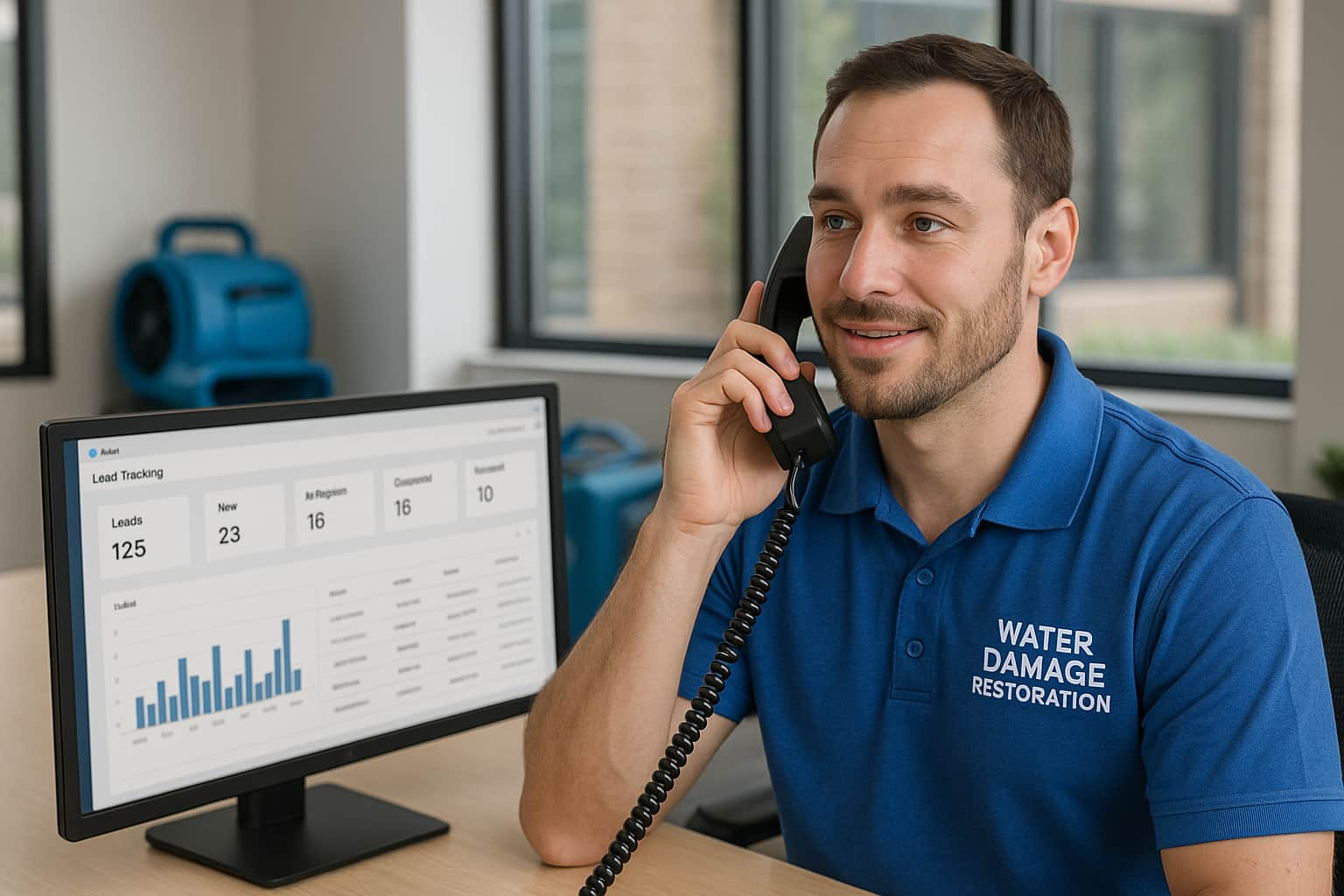How to Add a Second Crew and Double Your Revenue From Water Damage Leads
Running a successful water damage restoration business with one crew is hard work. But what happens when you're getting more calls than you can handle?
You're probably thinking about adding a second crew. That's exciting! But here's the thing - scaling wrong can hurt your business more than help it.
Most business owners jump into expansion too fast. They see more leads coming in and think "time to hire more people." But adding a second crew isn't just about hiring. It's about changing how your whole business works.
This guide shows you exactly how to add your second crew the right way. You'll learn when you're really ready, how much money you need, and what systems must be in place first. Plus, you'll discover how to keep quality high across both teams.
Table of Contents
Growth vs. Scaling: The Critical Difference
Financial Health: Are You Ready?
Operational Capacity: When You Need More Crews
Systems and Processes: Your Foundation
Strategic Planning for Business Expansion
Equipment and Vehicle Investment Strategy
Recruiting and Training Your Second Crew
Cash Flow Management During Expansion
Maintaining Quality Across Multiple Crews
Lead Generation and Marketing for Two Crews
Real Success Stories and Lessons
Growth vs. Scaling: The Critical Difference
Here's something most business owners get wrong. Growth and scaling aren't the same thing.
Growth means making more money but spending more money too. You add revenue, but costs go up at the same rate. Your profit stays about the same.
Scaling is different. You make a lot more money while costs don't increase as much. That means higher profits and a stronger business. While adding a second crew is one path to scaling, smart business owners also focus on maximizing revenue from existing operations. Discover how to grow revenue without getting more water damage leads to optimize profitability before and during your expansion.
Adding a second crew is your chance to scale, not just grow. But it only works if you do it right.
What Really Changes When You Add a Second Crew
Right now, you probably run one crew. Maybe you're even on that crew yourself. You can see everything that happens. You can fix problems quickly. You know exactly what's going on.
With two crews, everything changes:
You can't watch both teams at once
Communication gets harder
Quality control becomes trickier
Managing money gets more complex
According to ServiceTitan, expanding too quickly without proper systems is one of the biggest reasons restoration businesses fail during growth.
The good news? When done right, a second crew gives you:
Double the capacity for jobs
Faster response times
Bigger service area
Much higher revenue potential
Less dependence on you personally
But here's the key - you need the right foundation first.
Financial Health: Are You Ready?
Before you even think about hiring, let's talk money. Adding a second crew costs a lot upfront. Are you financially ready?
You Need Consistent Profits
The water damage business can be very profitable. Gross margins can hit 50-80% on jobs. But that's gross profit, not net profit.
For scaling to work, you need consistent net profit margins around 15%. That's the industry benchmark from Restoration & Remediation Magazine.
Look at your last 12 months. Are you hitting 15% net profit consistently? If not, fix your current operation first.
Cash Flow is King
Here's the brutal truth about restoration work - you get paid slowly. Insurance companies often take 30-60 days to pay. Sometimes longer.
But when you add a second crew, your expenses start immediately:
Payroll every two weeks
Equipment payments
Vehicle costs
Insurance increases
You need enough cash to cover these costs while waiting for payments. Financial experts recommend having 2-3 months of operating expenses saved up.
Example: If your monthly expenses will be $20,000 with two crews, you need $40,000-$60,000 in cash reserves minimum.
Revenue Must Be Growing
Don't add a crew based on one busy month. You need consistent, growing revenue.
Look for:
Revenue growing at least 10% annually
Steady monthly income (not just seasonal spikes)
More leads than you can handle consistently
ServiceTitan's data shows restoration businesses growing above 5-7% annually are better positioned to scale successfully.
The Bottom Line: If you don't have steady profits, strong cash flow, and growing revenue, wait. Fix these first.
Operational Capacity: When You Need More Crews
Just because you're busy doesn't mean you need a second crew. You need to prove your current crew is truly maxed out.
Track Your Lead Flow
Start measuring these numbers:
How many qualified water damage leads do you get monthly?
What percentage become paying jobs?
How many water damage leads do you turn down?
What's your average response time for emergency services?
If you're consistently turning down good restoration leads or your response times are getting longer, that's a signal you need more capacity.
Measure Your Current Crew's Work
Track how busy your crew really is:
Billable hours vs. total hours: Are they working 75-80% of available time consistently?
Jobs per day: Is this number staying flat even with more leads?
Job completion time: Is it taking longer to finish similar jobs?
CompanyCam recommends tracking billable hours as a key metric. If your crew is consistently billing 75-80% of their time, they're probably at capacity.
Watch for Quality Problems
Being too busy can hurt quality. Watch for:
More callbacks to fix problems
Lower customer satisfaction scores
Negative online reviews increasing
Your team making more mistakes
Important: Don't add a second crew to fix quality problems. Fix the quality issues first, then add capacity.
The Real Test
You're ready for a second crew when:
Your current crew is consistently 75-80% utilized
You're turning down 2-3 water damage leads per week
Quality remains high despite high workload
Revenue is growing month over month
Your water damage marketing efforts are generating more calls than you can handle
Systems and Processes: Your Foundation
Here's where most business owners mess up. They hire people before building systems. That's backwards.
Systems are what make scaling work. Without them, your second crew will do things differently than your first crew. Customers will notice. Quality will suffer.
You Need Written Procedures
Every important task needs a written procedure. Magicplan calls these Standard Operating Procedures (SOPs) "the backbone of a well-organized restoration company."
Write down exactly how to:
Assess water damage when you arrive
Set up water mitigation equipment properly
Document moisture levels for insurance claims
Communicate with customers about water restoration timelines
Complete jobs and get paid
Example: Your moisture documentation SOP might say: "Take moisture readings in 3 spots per room. Record readings on form ABC. Take photos of meter displaying each reading. Upload photos to job file within 2 hours."
Make it that specific. If you can't write it down clearly, your second crew can't do it consistently.
Management Changes Everything
Right now, you probably manage by walking around and checking on things. With two crews, that won't work.
You need to shift from direct management to systems-based management. That means:
People follow written procedures, not just your instructions
Quality gets checked through systems, not just your eyes
Problems get solved following processes, not just your experience
This is a big change. ServiceTitan says this transition from technician to manager is one of the hardest parts of scaling.
Technology Holds It All Together
You need software to manage two crews effectively:
Job management software like ServiceTitan or Jobber
Photo documentation like CompanyCam or Encircle
CRM software to track all client info and lead generation sources
Financial tracking integrated with operations
Call tracking systems to monitor lead sources and conversion rates
Magicplan points out that technology lets you "document the exact location of your equipment and share it with others." That's crucial when you can't be everywhere at once.
The Reality Check: If you don't have written procedures for your main tasks, stop here. Build those first. Your second crew's success depends on it.
Strategic Planning for Business Expansion
Don't just hire people and hope it works. You need a real plan.
Get Clear on Your Goals
Why do you want a second crew? Different goals need different strategies:
Make more money: Focus on efficiency and utilization
Cover more area: Plan for travel time and fuel costs
Reduce your workload: Invest heavily in management systems
Add new services: Budget for additional training and equipment
Your goal determines how you structure everything else.
Study Your Market
Before adding capacity, make sure there's enough work:
Current market: Can your area support two crews?
Competition: Are competitors struggling to keep busy?
Growth trends: Is demand increasing or staying flat?
Insurance relationships: Can your current insurance contacts provide more work?
Pro tip: Talk to your insurance adjusters. Ask if they have more water damage leads than they can send you. Their answer tells you a lot about market demand for water restoration services.
Choose Your Expansion Strategy
You have three options:
Lead strategy: Add capacity before demand is proven (risky but captures opportunities)
Lag strategy: Wait until you're completely overwhelmed (safe but you might lose business)
Match strategy: Add capacity as demand grows (balanced approach)
For most restoration businesses, the match strategy works best. Add your second crew when demand is clearly there and growing.
Run the Numbers
Build a detailed financial model:
Startup costs: Equipment, vehicle, training, certifications
Monthly costs: Payroll, insurance, fuel, maintenance
Revenue projections: Based on realistic job volume
Break-even timeline: When will the second crew pay for itself?
ROI calculation: What return will you get on your investment?
Example: If startup costs are $75,000 and monthly profit from the second crew will be $8,000, your payback period is about 10 months.
Equipment and Vehicle Investment Strategy
A second crew needs its own equipment and vehicle. This is a big investment, so plan carefully.
Essential Equipment List
For water damage restoration, you need:
Water Extraction:
Portable extractors
Submersible pumps
Extraction wands and tools
Drying Equipment:
Air movers (different types for different jobs)
Dehumidifiers (LGR units work best)
Enough units to handle typical job sizes
Monitoring Tools:
Moisture meters (pin and pinless types)
Thermal imaging cameras
Air quality monitors
Other Essentials:
Cleaning and sanitizing equipment
Personal protective equipment
Containment supplies
Extension cords and power strips
Jon-Don recommends buying equipment packages when possible. You often get better prices than buying individual pieces.
Budget Range: Expect to spend $15,000-$50,000+ for a complete equipment package, depending on job types and crew size.
Vehicle Selection
Your crew's vehicle is their mobile office. Choose carefully:
Cargo Vans (Ford Transit, RAM ProMaster):
Enclosed storage protects equipment
Weather protection
Professional appearance
Good for standard water jobs
Service Trucks:
Higher payload capacity
Can tow larger equipment
Open bed for big items
Better for demolition work
New vs. Used:
New: Maximum reliability, warranty, but high cost
Used (2-3 years): Good value, proven reliability
Consider certified pre-owned for warranty protection
Lease vs. Buy:
Lease: Lower upfront costs, predictable payments
Buy: Build equity, unlimited miles, can customize
Work Truck magazine emphasizes that proper vehicle organization impacts crew efficiency and equipment life.
Smart Budgeting
Your total investment includes:
Vehicle down payment or lease deposit
Complete equipment package
Initial supplies and consumables
Training and certifications
Higher insurance premiums
Working capital for first 2-3 months
Critical: Many businesses underestimate working capital needs. You need money to pay the crew while waiting for insurance payments.
Recruiting and Training Your Second Crew
Your second crew's success depends on hiring the right people and training them properly.
Hiring the Right People
Don't just hire warm bodies. You need people who fit your company culture.
Look for these qualities:
Good communication skills
Problem-solving ability
Attention to detail
Works well under pressure
Team player attitude
According to ServiceTitan, you can teach technical skills, but you can't easily change someone's attitude or work ethic.
Where to find good candidates:
Employee referrals (often the best source)
Industry job boards focused on home services marketing
Local trade schools with water restoration programs
Workforce development programs
Social media groups for restoration professionals
Essential Training
Every new crew member needs:
IICRC certification (Water Restoration Technician minimum)
Company procedures training
Safety protocols for emergency services
Equipment operation training for water mitigation tools
Customer service training for handling upset property owners
Documentation standards training for insurance claims
The IICRC provides industry-standard certifications. Budget $500-$2,000 per person for initial certifications.
The Leadership Challenge
Your biggest challenge? Promoting a technician to lead your second crew.
Being good at restoration work doesn't automatically make someone a good manager. ServiceTitan notes this is one of the most common scaling mistakes.
Before promoting someone to crew leader:
Provide leadership training
Define their new role clearly
Give them management tools and processes
Set up mentoring with experienced managers
Create clear performance expectations
Keeping Your Company Culture
With two crews, maintaining your company culture gets harder. Here's how to do it:
Write down your core values clearly
Make culture part of your hiring process
Include culture training in onboarding
Reinforce values in team meetings
Recognize people who demonstrate your values
Create opportunities for crews to interact
Remember: Your company culture probably exists in your head and in conversations. With two crews, you need to make it more formal and explicit.
Cash Flow Management During Expansion
Adding a second crew creates a cash flow challenge. Your expenses double immediately, but revenue takes time to build.
The Cash Flow Problem
When you add a second crew:
Payroll starts immediately
Equipment payments start immediately
Vehicle costs start immediately
Insurance increases start immediately
But revenue from the new crew:
Takes time to build up
Gets delayed by insurance payment cycles
May be lower initially while the crew learns
This creates a gap that can kill your business if you're not prepared.
Managing the Challenge
Create detailed cash flow forecasts: Track expected income and expenses weekly for the next 13 weeks. This helps you spot problems before they happen.
Speed up collections:
Invoice immediately when jobs finish
Follow up on overdue payments weekly
Offer multiple payment options
Consider early payment discounts
Control expenses strategically:
Negotiate payment terms with suppliers
Don't overstock supplies initially
Time major purchases carefully
Consider renting specialized equipment initially
Secure financing in advance:
Build cash reserves before you need them
Establish a business line of credit
Consider equipment financing
Explore SBA expansion loans
FreshBooks explains it well: "There are two main strategies that improve your cash flow: increasing the amount of incoming money and reducing the amount of outgoing money."
Example Cash Flow Timeline:
Month 1: Second crew expenses start, minimal revenue
Month 2: Some revenue starts, but insurance payments delayed
Month 3: Revenue building, but still below expenses
Month 4: Revenue approaching break-even
Month 5-6: Crew becomes profitable
Plan for this timeline and have cash to cover the gap.
Maintaining Quality Across Multiple Crews
With two crews, keeping quality consistent gets much harder. You can't watch everyone all the time.
The Quality Challenge
Multiple crews create quality risks:
Different crews might do things differently
Less direct supervision from you
More complex communication
Higher chance of mistakes
Inconsistent documentation
Restoration & Remediation Magazine warns that quality variations can damage your reputation quickly.
Building Quality Systems
Standardize everything: Create detailed checklists for every major task. Make quality part of the process, not an afterthought.
Use technology for oversight:
Require photo documentation at key steps
Use apps like CompanyCam for consistent reporting
Review photos daily from both crews
Provide real-time feedback through the apps
Measure quality consistently:
Customer satisfaction surveys after every job
Quality inspections on random jobs
Track callback rates for both crews
Monitor online reviews by crew
Create quality competition:
Share quality metrics with both crews
Recognize exceptional quality performance
Have friendly competitions between teams
Share best practices between crews
Cultural Quality Focus
Make quality part of your company culture:
Hire people who care about doing good work
Train everyone on why quality matters
Reward quality, not just speed
Make quality everyone's responsibility
Lead Generation and Marketing for Two Crews
With two crews, your water damage marketing needs to generate double the leads. That's a big challenge that requires strategic planning. Before implementing advanced scaling strategies, ensure you have a solid foundation in place. Master the fundamentals with how to get water damage leads in 2025: the ultimate guide to build the lead generation system that will support your expanded operations.
Understanding Lead Generation Costs
Before scaling, you need to know your numbers:
What's your current cost per water damage lead?
What's your conversion rate from leads to jobs?
What's your average job value?
How many leads do you need monthly to keep both crews busy?
Example: If each crew needs 20 jobs per month, and your conversion rate is 40%, you need 100 qualified water damage leads monthly.
Marketing Strategies That Scale
SEO for contractors becomes even more important with two crews. You need higher search visibility to generate more restoration leads consistently. To generate the consistent lead volume needed for two crews, you need a comprehensive digital strategy. Implement how to get more water damage calls with emails, SEO, and tracking tools for the advanced marketing systems that support sustainable scaling.
Focus on:
Local SEO for restoration businesses in your service area
Google Business Profile optimization for water damage services
Service area SEO optimization for contractors covering multiple territories
Content marketing around emergency services and water mitigation
Pay-per-call leads can provide immediate results for your expanded capacity. These exclusive leads often convert better than form leads because customers are ready to talk immediately.
Google ads for water damage contractors let you control lead flow and scale up quickly. You can pause campaigns during slow periods and increase spending when both crews need work.
Managing Lead Quality and Cost
With two crews to keep busy, lead quality becomes critical. Focus on:
Exclusive water damage leads rather than shared leads
Fast-response systems to handle emergency calls quickly
Lead tracking to identify your best sources
Conversion rate optimization to get more jobs from existing leads. Converting leads becomes even more critical when you have two crews to keep busy. Perfect your phone sales process with how to book more water damage jobs with 5 proven phone scripts to maximize the return on your increased marketing investment.
Track these metrics closely:
Lead cost vs. job value ratio
Response time to new leads
Conversion rates by lead source
Customer satisfaction by lead type
Building Referral Networks
Don't rely only on paid advertising. Build relationships with:
Plumbers who discover water damage during repairs
Insurance agents and adjusters
Property managers and real estate agents
Other contractors who encounter water issues
These referral partnerships often provide high-quality restoration leads at lower costs than paid advertising.
Technology for Lead Management
Use CRM software to:
Track all lead sources and costs
Monitor response times
Follow up with unconverted leads
Analyze which marketing channels work best
Coordinate lead distribution between crews
Pro tip: Set up call tracking for all marketing channels. This helps you understand which water damage SEO efforts and advertising campaigns generate the best return on investment.
Scaling Marketing Budget
Plan to increase your marketing budget significantly. A good rule of thumb is spending 8-12% of revenue on marketing for home services businesses. With two crews, you might need to invest more initially to generate enough high-quality restoration leads.
Consider working with lead generation companies that offer:
Exclusive water damage leads in your area
Pay-per-call pricing models
No long-term contracts
Quality guarantees
This can supplement your organic marketing efforts while you build up your SEO and referral networks.
Real Success Stories and Lessons
Learning from others' experiences can save you time, money, and headaches.
What Works: Systems-First Approach
Successful restoration companies that scale well share common traits:
They document all procedures before hiring
They invest in training and leadership development
They use technology to maintain oversight
They plan financially for the transition period
They maintain strong company culture
Restoration & Remediation Magazine identifies "improving work processes" as a key factor in successful scaling.
What Doesn't Work: Rush to Hire
Companies that struggle during expansion often:
Hire people before building systems
Promote the best technician without management training
Underestimate cash flow needs
Assume quality will remain the same automatically
Skip the planning phase
Common Mistake: Cash Flow Crisis
Many businesses face severe cash problems during expansion:
Equipment costs drain reserves
Insurance payment delays create shortages
No formal cash flow planning
Owners end up funding operations personally for months
FreshBooks explains why: "If your clients owe you too much, then you won't have enough money coming in... Either scenario results in the same thing: negative cash flow."
The Leadership Lesson
The biggest lesson from successful companies? Invest in leadership development early.
Technical skills don't automatically make good managers. The best restoration companies:
Identify leadership potential early
Provide formal management training
Create clear career paths
Support new managers with mentoring
Give them tools and systems to succeed
Key Takeaways
From these real experiences:
Preparation beats reaction: Plan systematically, don't just respond to busy periods
Cash is king: Maintain strict financial discipline and adequate reserves
Systems enable growth: Document everything before you scale
Culture needs intention: Company values must be explicit and reinforced
Leadership is learnable: Invest in developing your people
Your Action Plan for Success
Adding a second crew can transform your water damage restoration business. But only if you do it right.
Here's your step-by-step action plan:
Step 1: Assess Your Readiness
Check your financial health (profits, cash flow, revenue growth)
Measure your operational capacity (crew utilization, lead flow)
Evaluate your systems (SOPs, technology, management processes)
Step 2: Build Your Foundation
Document all key procedures
Implement job management software
Train your current team on systems
Develop cash flow forecasting
Step 3: Plan Your Expansion
Set clear goals for your second crew
Analyze market demand
Create detailed financial projections
Secure necessary financing
Step 4: Make Strategic Investments
Purchase or lease appropriate vehicle
Buy complete equipment package
Set up technology systems
Budget for working capital
Step 5: Hire and Train Strategically
Recruit people who fit your culture
Provide comprehensive training
Develop crew leadership
Maintain quality standards
Step 6: Scale Your Marketing and Lead Generation
Increase your water damage marketing budget
Optimize your Google Business Profile
Track lead costs and conversion rates
Build referral partnerships
Implement CRM software for lead management
Step 7: Manage the Transition
Monitor cash flow closely
Track quality metrics
Adjust systems as needed
Support your new crew's success
The Bottom Line
Scaling your restoration business isn't just about hiring more people. It's about building systems that let your business run without you managing every detail.
When done right, a second crew gives you:
Higher revenue and profits from more water damage leads
Better work-life balance
Stronger market position in emergency services
More business stability
Greater long-term value
But it requires preparation, investment, and ongoing management. The companies that succeed are those that build on solid foundations and plan systematically.
Ready to take the next step? Start with your readiness assessment. Be honest about where you stand. Address any weaknesses before moving forward.
Your future self will thank you for taking the time to do this right.
And if you want more pay per call water damage leads? Sign up for free with ResultCalls.

Alex Gambashidze
Marketing Associate at ResultCallsHello everyone! My name is Alex and I write these blogs to help educate small business owners on different ways to grow their business. My goal is to make lead generation as easy as possible for you. After reading these blogs, I hope you leave with some actionable steps that will get you closer to growing your business :)
2,000+
Happy local businesses
See what some of them have to say.


